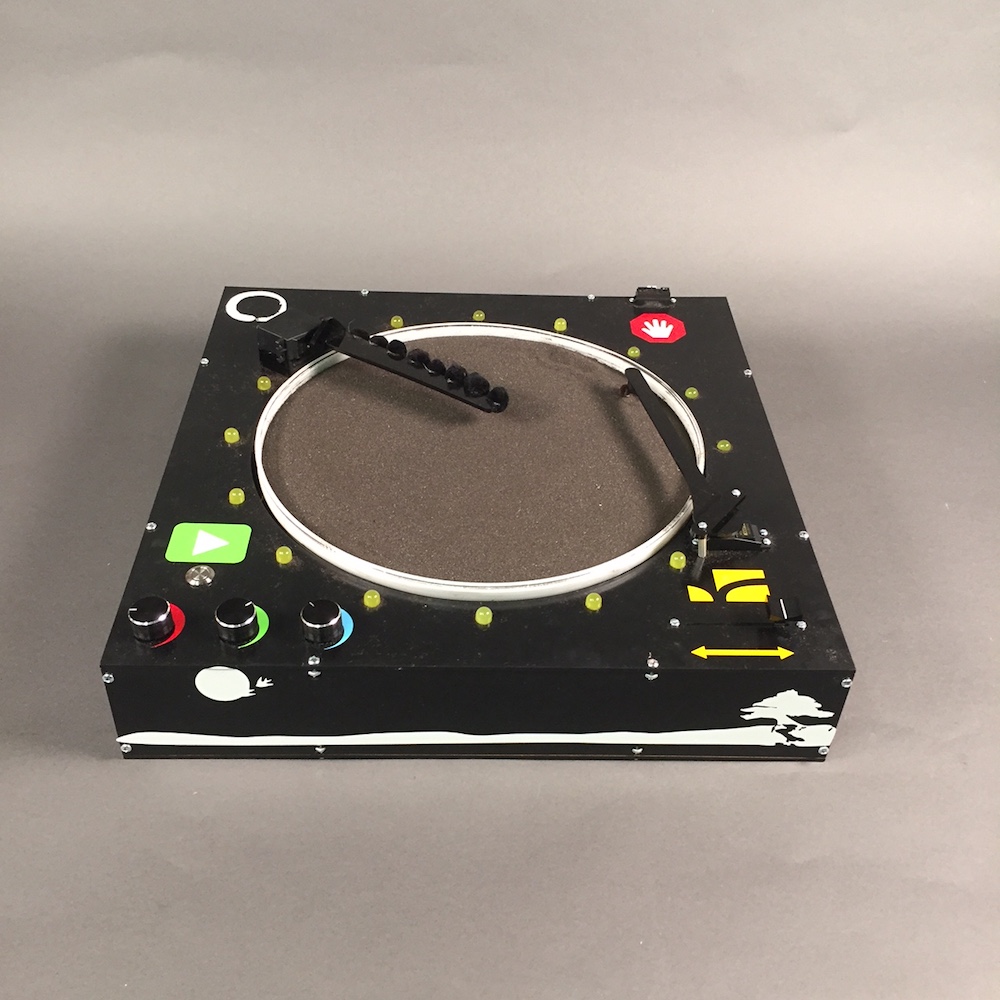Mechanical
Electrical
About.
The ensō is a Zen Buddhist symbol, typically drawn in one fluid motion, that denotes enlightenment, elegance, and continuity. This project, named after this symbol, was produced with a team of 3 other engineering students in Stanford's Smart Product Design Fundamentals course. It allows the user to create a unique pattern in one fluid, continuous motion. The created art is ephemeral; after completion, the pattern is displayed only briefly before it is cleared away.
What It Does.
Ensō begins in welcome mode: red, green, and blue LEDs underneath the black sand cycle through a sine wave of colors. When the start button is pressed, the LEDs surrounding the outside of the disk turn on. These turn off in series over the course of 45 seconds, indicating the passage of time. In that time, the user may use the stylus to draw a pattern in the rotating sand. This stylus is controlled with a sliding potentiometer. The user may also change the color of the LEDs beneath the sand or pause the rotation of the wheel. The bade LED colors are controlled through three rotational potentiometers. To pause, the user holds their hand over the proximity sensor. At time, the controls vibrate, the disk stops, and the art is displayed for 5 seconds. The reseter then engages as the disk spins again. After the sand is cleared, Ensō is back in welcome mode.
Mechanical Design.
The art is created on a large spinning disk. This disk was coupled to a DC motor and supported on a bearing surface to be kept in plane. The stylus has a soft tip which draws smoothly in the sand. This compliant tip also prevents all sounds of scratching. We applied simple mechanical dampening on the stylus to mitigate the vibration of our low end servo motor. Ensō is self-contained, with the electronics are housed inside of the laser cut box.
Electrical Design.
Ensō is run on a TIVA Launchpad. This microcontroller interfaces with the electronics. Ensō uses LEDs (RGB strips and single-color bulbs), shift registers, a proximity sensor, two servo motors, a vibration motor, a DC motor, several potentiometers, and a button. While most of the control was done in software, the input to the proximity sensor is filtered and run through a schmitt trigger to produce a digital input.
Software Design.
The Ensō software modules (developed in C) are designed as state machines. The timer LEDs, start button, base LEDs, sand disk, stylus, and reseter all have separate state machines. These services interact by posting and reacting to events. I developed the software for the PWM driver base LEDs, the stylus and resetter servos, the reading of analog input from the potentiometers, the debouncing start button, and the vibration motor.
Gallery.

Our Initial Sketch

CAD Modeling

Different Methods pf Interaction

The Finished Product

Trying out Ensō

Demo Art